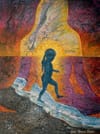
Inner Child
the inner child is regarded as a subconscious personality consisting of your younger self's learned behaviors and experiences.


the inner child is regarded as a subconscious personality consisting of your younger self's learned behaviors and experiences.
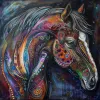
Arion was typically described as the offspring of Poseidon and Demeter, two of the most important Greek gods; he was born after they laid together in the form of horses. Given his impressive pedigree, Arion was no ordinary horse.

Eunomia (Greek: Εὐνομία) was a minor Greek goddess of law and legislation, as well as the spring-time goddess of green pastures (eû means "well, good" in Greek, and νόμος, nómos, means "law", while pasturelands are called nomia).
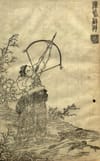
In Chinese mythology, Hou Yi (后羿) is considered to be the greatest archer of all time shooting down nine of the ten suns. Once an immortal who lived in the Jade Emperor’s palace, Hou Yi made the decision to become human in order to help humanity in times of need.

Erysichthon was a king whose addictive behaviors resulted in him eating himself in hunger.

Jiminy Cricket is a Disney creation for the 'moral cricket' in Carlo Colladi's tale of Pinocchio who served as a conscience for the lying wooden puppet. Holding oneself pure.

Adonis was a beautiful Greek man who fell in love with himself. OFC is a part of the Orbito Frontal Cortex that appreciates beauty in all its forms

Hegesias (Greek: Ἡγησίας; fl. 290 BC[1]) of Cyrene was a Cyrenaic philosopher, the Cyrenaics forming one of the earliest Socratic schools of philosophy. He argued that happiness is impossible to achieve, and that the goal of life was the avoidance of pain and sorrow.

13l is associated with festivities, revelry. Comus was a Greek god of festivities, revels, and nocturnal dalliances.

Fides was the Roman goddess of trust and bona fides (good faith) in Roman paganism. She was one of the original virtues to be considered an actual religious divinity.

Falcon is known for smooth eye movement tracking movement of prey while pursuing at close to 250 mph, canceling out self-motion. MST is responsible for the integration and analysis of global, visual motion and the perception of self-motion.

Famous for his "primitive" style with jungle motifs and pops of color that attract the eye. the V4t area demonstrates a high level of activity in response to both motion and shape-sensitive information, indicating its significance in the integration of object processing and global-motion perception.

Haring's stick figure and relatively "simple" figures draw clear delineation of boundaries. Orientation of boundary is of particular concern to the Lo1 area.

Andy Warhol famous for high contrast work both in color use and in topic of painting subjects.

Suerat painter of Pointillism, also called divisionism and chromo-luminarism, in painting, the practice of applying small strokes or dots of colour to a surface so that from a distance they visually blend together.

Rothko famous for his minimalist are with lines and blocks of color- that although some decry it not as art, appeals to many people throughout the world. the V6 area is a portion of the eye that prefers long uninterrupted lines. Black-and-white thinking, dividing into high-contrast blocks.

Hopper painter of iconic places. VMV2 about use of color, texture hue toward recognition of places.

Arachne was a weaver who acquired such skill in her art that she ventured to challenge Athena, goddess of war, handicraft, and practical reason.

Dispsas was a Greek serpent whose bite caused intense thirst.

The tallest land mammal, with a neck as long as 6 feet, the giraffe is also well known for the unique brown and white pattern on its coat (“pelage”) and its lengthy eyelashes and legs.

Hel (meaning Hidden) was one of the children of the trickster god Loki, and her kingdom was said to lie downward and northward. Hel is generally presented as being rather greedy, harsh, and cruel, or at least indifferent to the concerns of both the living and the dead.
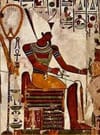
Atum created the god Shu and goddess Tefnut by spitting them out of his mouth. Atum did so through masturbation, with the hand he used in this act representing the female principle inherent within him. Other interpretations state that he has made union with his shadow

Hecate is the Greek Triple Goddess--Maiden, Mother, Crone. In neuromythography, she represents the three estrogens.

Ixion, in Greek legend, son either of the god Ares or of Phlegyas, king of the Lapiths in Thessaly. He murdered his father-in-law. Ixion abused his pardon by trying to seduce Zeus's wife, Hera. Ixion was condemned to torment on a burning wheel for all eternity.

Iambe (Greek: Ἰάμβη) in Greek mythology The extravagant hilarity displayed at the festivals of Demeter in Attica was traced to her, for it is said that when Demeter, in her wanderings in search of her daughter, arrived in Attica, Iambe cheered the mournful goddess with her jokes
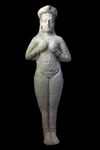
Astarte, goddess of war and in lesser manner sexual love. In Egypt she was thought of as an especially powerful warrior goddess and was also associated with the most powerful war machine of the time: the horse and chariot.

Hypnos was a primordial deity in Greek mythology, the personification of sleep. He lived in a cave next to his twin brother, Thanatos, in the underworld, where no light was cast by the sun or the moon; the earth in front of the cave was full of poppies and other sleep-inducing plants.

Cerberus, in Greek mythology, the monstrous watchdog of the underworld. He was usually said to have three heads and heads of snakes grew from his back, and he had a serpent's tail.
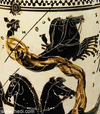
Hemera Day(/ˈhɛmərə/; Ancient Greek: Ἡμέρα [hɛːméra] "Day") was the personification of day and one of the Greek primordial deities. She is the goddess of the daytime and, according to Hesiod, the daughter of Erebus and Nyx (the goddess of night).

goddess of strife and discord. Her Roman equivalent is Discordia, which means "discord". Eris's Greek opposite is Harmonia, whose Roman counterpart is Concordia. Homer equated her with the war-goddess Enyo, whose Roman counterpart is Bellona.

Anteros was the god of requited love, literally "love returned" or "counter-love" and also the punisher of those who scorn love and the advances of others, or the avenger of unrequited love. paraventricular nucleus (hypothalamus), magnocellular division

Dijkstra invented an algorithm for finding the shortest path between two points. mMB tracks head angular velocity during turns, and coarsely keeps track of bursts of fast and slow speed. These are chained together to find paths.

Hathor was often depicted as a cow, symbolizing her maternal and celestial aspect, although her most common form was a woman wearing a headdress of cow horns and a sun disk.TIDA controls lactation during motherhood. Hathor was the Egyptian goddess of motherhood, a cow from whose udders flowed milk
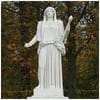
DEMETER was the Olympian goddess of agriculture, grain and bread who sustained mankind with the earth's rich bounty. She presided over the foremost of the Mystery Cults which promised its intiates the path to a blessed afterlife in the realm of Elysium.

Herodotus was a Greek Historian from Ionia. He is most notably known for his writing of The Histories. The first six books deals with the growth of the Persian Empire under the rulers of Croesus and later Cyrus the Great .

Dyad is a title used by the Pythagoreans for the number two, representing the principle of "twoness" or "otherness". Numenius of Apamea, a Neopythagorean philosopher in the latter 2nd century CE, said that Pythagoras gave the name of Monad to God, and the name of Dyad to matter.
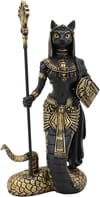
Bastet, also called Bast, ancient Egyptian goddess worshiped in the form of a lioness and later a cat. The daughter of Re, the sun god, Bastet was an ancient deity whose ferocious nature was ameliorated after the domestication of the cat around 1500 bce.
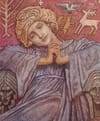
Flidais is a female figure in Irish Mythology, known by the epithet Foltchaín ("beautiful hair"). She is believed to have been a goddess of cattle and fertility.

Beowulf was the first hero of western literature. Typical, epic heroes are honest, hard-working, loyal, brave, of noble birth, and probably good-looking, too. Beowulf has all these qualities.

Apollo was a god in Greek mythology, and one of the Twelve Olympians. He was the god of healing, medicine and archery, and of music and poetry. He was the leader of the Muses.

Hera (Roman name: Juno), wife of Zeus and queen of the ancient Greek gods, represented the ideal woman and was goddess of marriage and the family.

Diogenes of Sinope (c. 404-323 BCE) was a Greek Cynic philosopher best known for holding a lantern (or candle) to the faces of the citizens of Athens claiming he was searching for an honest man.
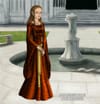
AIDOS (Aedos) was the goddess or personified spirit (daimona) of modesty, shame, reverence and respect. ... As a quality Aidos was the feeling of shame which restrains men from doing wrong.

HIMEROS was the god of sexual desire and one of the Erotes, the winged gods of love. ... Himeros was depicted as winged youth or child. He often appears alongside Eros in scenes of Aphrodite's birth, fluttering around the goddess as she reclines in her conch-shell bed.

Cernnunos was the shaggy Celtic god who defended the forest. Right amygdala reacts to threats to self and affronts to conservative values.

Brigid was a goddess of the Tuatha Dé Danann. She was a daughter of the chief of the gods, The Dagda, and was known as a goddess of healers, poets, smiths, childbirth and inspiration. Her name means "exalted one".

Hedylogus (Ancient Greek: Ἡδυλόγος) was the god of sweet-talk and flattery and one of the winged love gods called the Erotes. AHA is involved in sexual approach behaviors. Hedylogos is the Greek god of sweet talk and flatter.

ANANKE was the primordial goddess (protogenos) of necessity, compulsion and inevitability. Area 23c monitors progress of strategy and detects failure to progress towards the outcome.

Ishtar, (Akkadian), Sumerian Inanna, in Mesopotamian religion, goddess of war and sexual love. Ishtar is the Akkadian counterpart of the West Semitic goddess Astarte. ... The power attributed to her in war may have arisen from her connection with storms.

Carmenta was a goddess of childbirth and prophecy, associated with technological innovation as well as the protection of mothers and children, and a patron of midwives. Left: IQ related, maternal happiness, right: socialization restraint in males

Disciplina was a minor deity and the personification of discipline. The word disciplina itself, a Latin noun, is multi-faceted in meaning; it refers to education and training, self-control and determination, knowledge in a field of study, and an orderly way of life

In Hinduism, dharma signifies behaviors that are considered to be in accord with Ṛta, the order that makes life and universe possible, and includes duties, rights, laws, conduct, virtues and "right way of living".

Sanskrit Kṛiṣhṇa, one of the most widely revered and most popular of all Indian divinities, worshipped as the eighth incarnation (avatar, or avatara) of the Hindu god Vishnu and also as a supreme god in his own right.
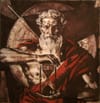
Chronos was the Greek Titan God of Time
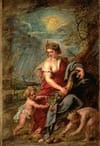
Antevorta is the spirit of the future meaning “before change,” is also known as Prorsa or Porrima, indicating “head first” or “straight ahead,” the correct position for a baby's birth: request her help if a baby is not in correct position

This breed is famed for its ability to discern human scent over great distances, even days later. Its extraordinarily keen sense of smell is combined with a strong and tenacious tracking instinct, producing the ideal scent hound.

"ferret" is derived from the Latin furittus, meaning "little thief", a likely reference to the common ferret penchant for secreting away small items.

"Advaita" (a = not, dvaita = two, means no-two or non-dual).

Kawaii is the culture of cuteness in Japan. It can refer to items, humans and nonhumans that are charming, vulnerable, shy, and childlike.

Hyperion is the spotlight of the mind

Moros, the Greek god of doom, represents the lateral habenula (lHb).

Poseidon is the Greek god of the sea. He is associated with horses. He represents the hp1 sector and zone.

Hecate is the Greek Triple Goddess--Maiden, Mother, Crone. In neuromythography, she represents the three estrogens.

Hecate is the Greek Triple Goddess--Maiden, Mother, Crone. In neuromythography, she represents the three estrogens.

Hecate is the Greek Triple Goddess--Maiden, Mother, Crone. In neuromythography, she represents the three estrogens.
The reference library for neuromythography archetypes.
The home of neuromythography
